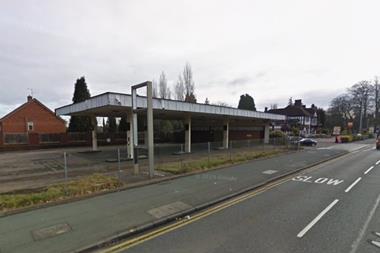To SAY SEPTEMBER has been an interesting month is a little bit of an understatement. As I write this article Hurricane Rita is coming onshore. Quite often, when a disaster is anticipated the actual event is thankfully less severe. It’s the ones that aren’t anticipated that seem to be more devastating. Let’s hope that Rita comes into this category and, from a selfish point of view, let’s hope that the refining capacity around Houston remains relatively unscathed. We’ve enough problems with fuel prices without another ratcheting-up of demand on the European scene.
AS THE WORLD WATCHED the aftermath of Katrina there was a growing amazement and disbelief at the chaos and incompetence that ensued. This was not some impoverished, unknown and neglected part of Asia or Africa; this was, supposedly, the most powerful country in the world. In the land of automation and computerisation, 20,000 people in an easily identifiable location went without food, water or medicine for days. The speed of the descent into lawlessness and armed anarchy gave a timely reminder that some civilisations are more civilised than others.
IF THERE WAS ANY COMFORT that the UK could draw from the July tube bombings, it was the efficient and well-organised performance of the London emergency services and hospitals. While not attempting to equate the scale of the two disasters the superb response in London was a result of careful, well considered contingency planning.
ANY SMUGNESS we might have felt, however, should have swiftly evaporated with the events surrounding the ‘fuel protest’. The scale of the panic buying at the pumps was unbelievable. People sitting in a queue for an hour for £15 of petrol – truly staggering! If there was any light relief for our hard-pressed staff it was how virtually every customer came in commenting how crazy people were to panic! Talk about self-certification for mental illness!
WHAT WAS REALLY SCARY was the response of the oil companies. With the odd exception, there was virtually delivery meltdown. Without any physical blockade and as a result of ‘only’ two days panic buying, the distribution side virtually disintegrated. Now this was no unforeseen, natural disaster. Not only had we the experience of last time round, but also there was the threat of a protest six months ago. A threat that may not have received publicity in the media but that was taken very seriously by industry insiders.
SO THE QUESTION IS, Mr Oil Industry, have you heard of contingency planning? I know that we live in an era where efficiency is king and spare capacity is considered a wasteful luxury, but that doesn’t excuse the absence of a ‘Code Red’ plan to handle what resources you do have. A plan to handle order taking and allocation. A plan that has been well thought out and rehearsed. A plan that is understood by both oil company employees and retailers alike. Or is it a case of what the hell – we’ll struggle along and if there was a real crisis the government will step in anyway, so why should we bother? That’s not an acceptable attitude.
MEANWHILE, Shell left me even more mystified than usual. In an area I sometimes visit there is a Shell site near an Asda. On the Thursday BEFORE the protest week Shell went up to 93.9p for unleaded. On Friday Asda matched them. On Saturday Shell, amazingly, reduced back down to 92.9 to sit 1p below Asda. Asda then sold out of fuel on the Sunday and didn’t re-open till the Tuesday. To sell at a loss in the midst of panic buying and with your main competitor out of fuel takes a very special talent. I wish I had the brains of the Shell marketing department – my parents could have sued the obstetrician who delivered me for negligence!
AT LEAST THE PROTEST allowed us all to offload all that high-priced stock. They bought at 98.9 before the protest – they weren’t buying at 89.9 after the protest. With the extreme swings in Platt’s that we’re seeing these days how much more convincing do you need before you price to make profit?



























No comments yet